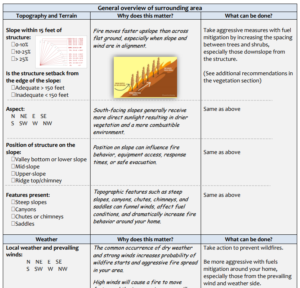Wildfire Risk Self Assessment
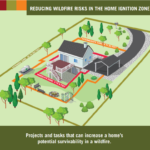 Gallatin County recommends that property owners self evaluate their property themselves as a first step. This is a quick way for you to see what you may easily be able to do to reduce wildfire risk on your property while providing a baseline from your eyes. Through taking this first step, it also provides you time to think about what specific questions, or concerns, you want to ask when you have a professional home risk assessment conducted.
Gallatin County recommends that property owners self evaluate their property themselves as a first step. This is a quick way for you to see what you may easily be able to do to reduce wildfire risk on your property while providing a baseline from your eyes. Through taking this first step, it also provides you time to think about what specific questions, or concerns, you want to ask when you have a professional home risk assessment conducted.
There are a multitude of materials that provide advice for property owners on wildfire risk, but they generally are all focused on two areas: reducing the intensity of wildfire and reducing opportunity for fire ignitions.
Reducing Wildfire Intensity
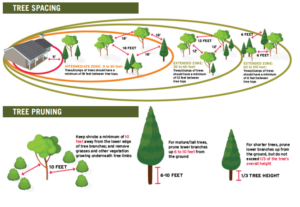 Regardless of whether a wildfire starts on your property, or spreads onto it, the fuels (vegetation), weather and topography will dictate the fire activity. We can’t control the weather, or change the topography, but we can manage the fuels (vegetation). Healthy managed vegetation on your property will limit the amount of available fuel (which becomes energy when burned) that a fire can consume, which reduces the ability for a wildfires to exhibit extreme behavior. Through removing dead vegetation, mowing grass, increasing spacing between trees and plants, limbing trees and using fire resistant vegetation near your home you will reduce the fire behavior potential of a fire on your property making it easier for fire fighters to control.
Regardless of whether a wildfire starts on your property, or spreads onto it, the fuels (vegetation), weather and topography will dictate the fire activity. We can’t control the weather, or change the topography, but we can manage the fuels (vegetation). Healthy managed vegetation on your property will limit the amount of available fuel (which becomes energy when burned) that a fire can consume, which reduces the ability for a wildfires to exhibit extreme behavior. Through removing dead vegetation, mowing grass, increasing spacing between trees and plants, limbing trees and using fire resistant vegetation near your home you will reduce the fire behavior potential of a fire on your property making it easier for fire fighters to control.
Reducing Opportunities for Fire Ignitions
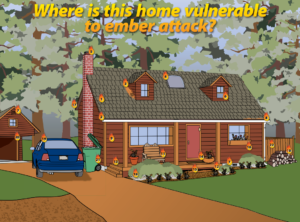 The second part is making it harder for fires to ignite around and on your home. In wildfires that destroy homes, the homes rarely burn down from direct flame impingement when the fire itself burns into the house. Typically, an approaching wildfire throws embers (small pieces of burning material lifted up by convective heat from the fire) ahead of the fire itself and these ember land in locations receptive to ignition and a spot fire starts (a fire ahead of the main fire). When this happens around a home, it places the home a risk of catching fire, so we try to minimize the opportunities for embers to catch anything on fire. To accomplish this, we utilize fire resistant landscaping and largest tree spacing around buildings. We also focus on the buildings themselves through the use of non-flammable construction materials, clearing of buildup debris on the house (gutters, eves, etc…), sealing off openings with screening (vents, crawlspaces, etc…), clearing out under decks, moving stored items (wood piles) away from the house, and more. Basically, we want to remove as many sources as possible that would be receptive to catching fire if an ember lands in them.
The second part is making it harder for fires to ignite around and on your home. In wildfires that destroy homes, the homes rarely burn down from direct flame impingement when the fire itself burns into the house. Typically, an approaching wildfire throws embers (small pieces of burning material lifted up by convective heat from the fire) ahead of the fire itself and these ember land in locations receptive to ignition and a spot fire starts (a fire ahead of the main fire). When this happens around a home, it places the home a risk of catching fire, so we try to minimize the opportunities for embers to catch anything on fire. To accomplish this, we utilize fire resistant landscaping and largest tree spacing around buildings. We also focus on the buildings themselves through the use of non-flammable construction materials, clearing of buildup debris on the house (gutters, eves, etc…), sealing off openings with screening (vents, crawlspaces, etc…), clearing out under decks, moving stored items (wood piles) away from the house, and more. Basically, we want to remove as many sources as possible that would be receptive to catching fire if an ember lands in them.
Self Assessment Tools
The tools below are all very similar and intended to provide the average home owner items to take into consideration that help make your property more resistant to impact from a wildfire.
Supplemental Information
The following information provides more in depth information about why the actions outlined in the Self Assessment Tools are important.
Print Material
Multimedia
What’s Next
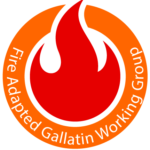 After you complete your self assessment, we encourage you to request a formal onsite Home Risk Assessment. We provide this at no cost and it provides you an opportunity to ask any questions and learn about available mitigation funding programs.
After you complete your self assessment, we encourage you to request a formal onsite Home Risk Assessment. We provide this at no cost and it provides you an opportunity to ask any questions and learn about available mitigation funding programs.

